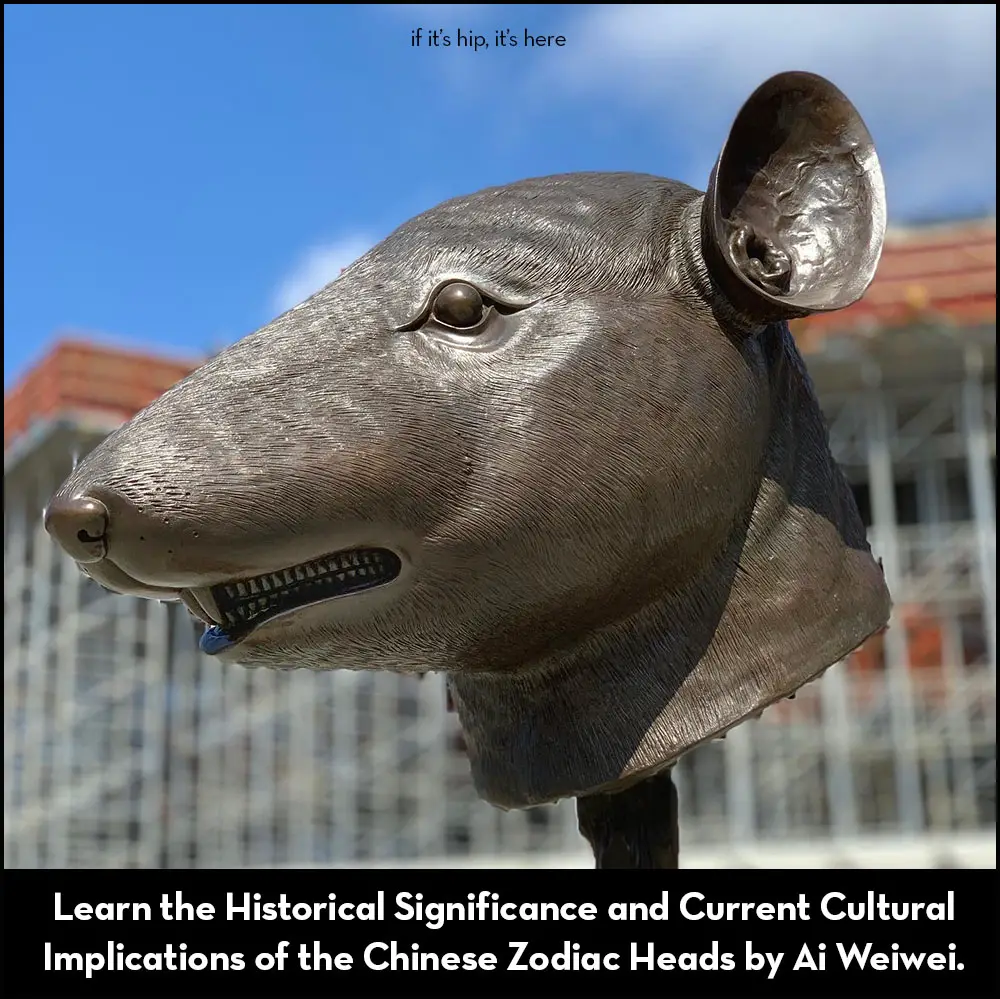Touring the world now for over 12 years and appearing in multiple museum venues and public places, you might have at least seen a photo of internationally acclaimed Chinese artist Ai Weiwei’s Circle of Animals / Zodiac Heads, if not the actual installation. Besides representing each symbol of Chinese Zodiac, what are these monumental bronze animal sculptures, what do they mean and why do they exist?
Chinese Zodiac Animal Heads

Ai Weiwei’s impressive bronze animal head sculptures are the Chinese artist’s interpretation of the twelve that once adorned the famed fountain-clock of the Yuanming Yuan, an imperial retreat in Beijing, before being looted by French and British troops in 1860.

Way back in the 18th century, in 1747 to be exact, two European Jesuits, Italian painter Giuseppe Castiglione and engineer Michel Benoist, serving in the court of the Qing dynasty Emperor Qianlong, designed a striking water-driven clock fountain to be placed in front of the largest palace, the Haiyan Tang, in the magnificent European-style gardens of the Yuanming Yuan (Old Summer Palace).
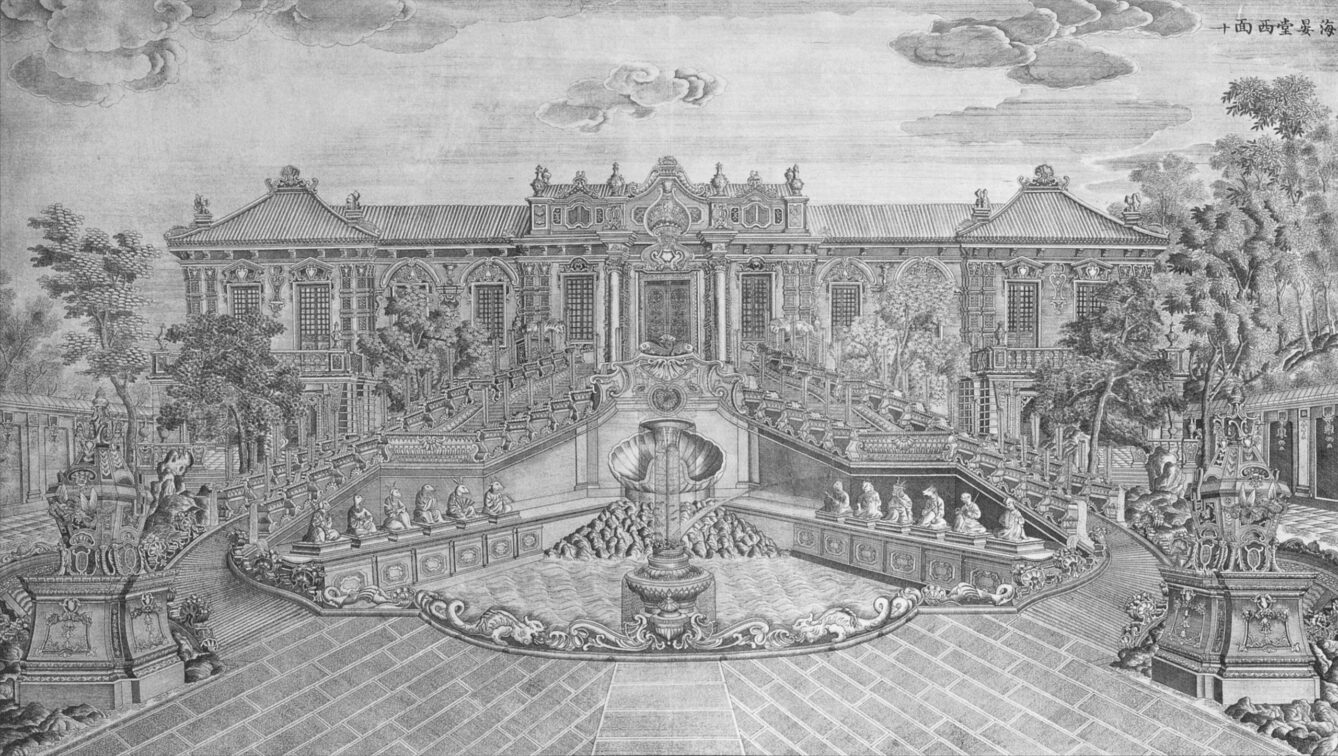
The great fountain comprised twelve bronze animal heads atop seated bodies (the bodies were made of wood, not bronze, and were burned in the looting) representing the traditional Chinese zodiac to adorn the imperial retreat in Beijing. The water-driven clocks originally functioned by spouting water at two-hour intervals and all spouting water in unison at noon.
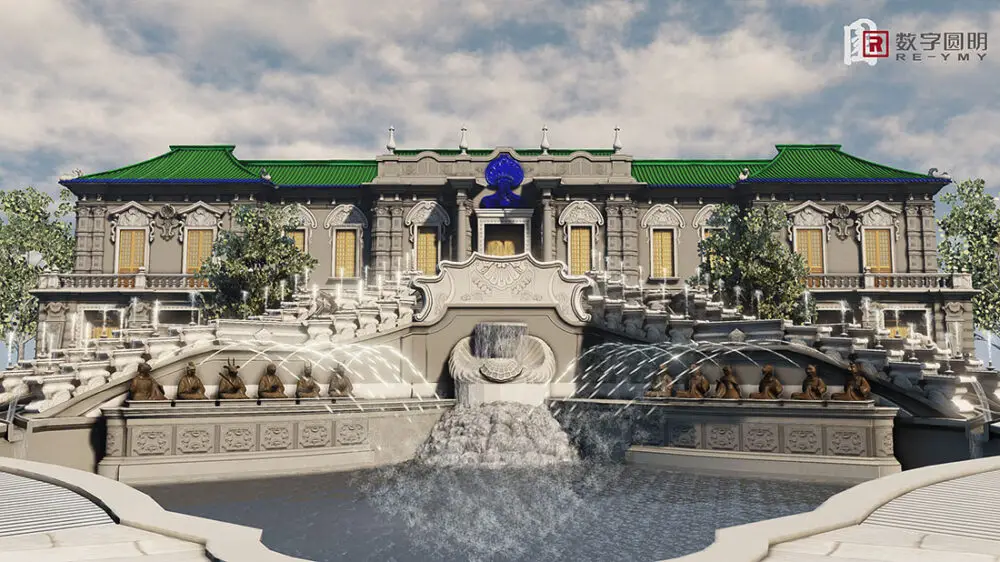
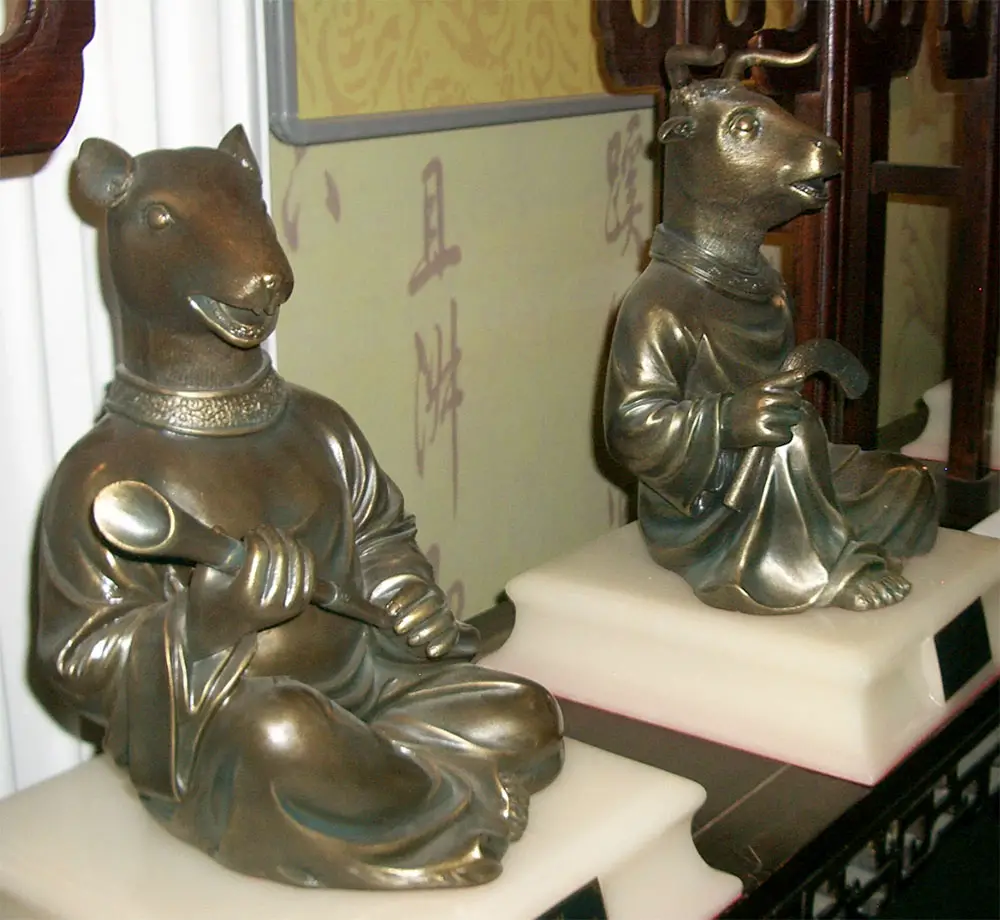
In 1860, during the Second Opium War, the Yuanming Yuan was ransacked by French and British troops, and the heads were pillaged. They’ve since become famous symbols for attempts to repatriate Chinese cultural artifacts. To date, seven of the 12 originals have been recovered while five; the Dog, Snake, Dragon, Rooster and Goat, are still missing.
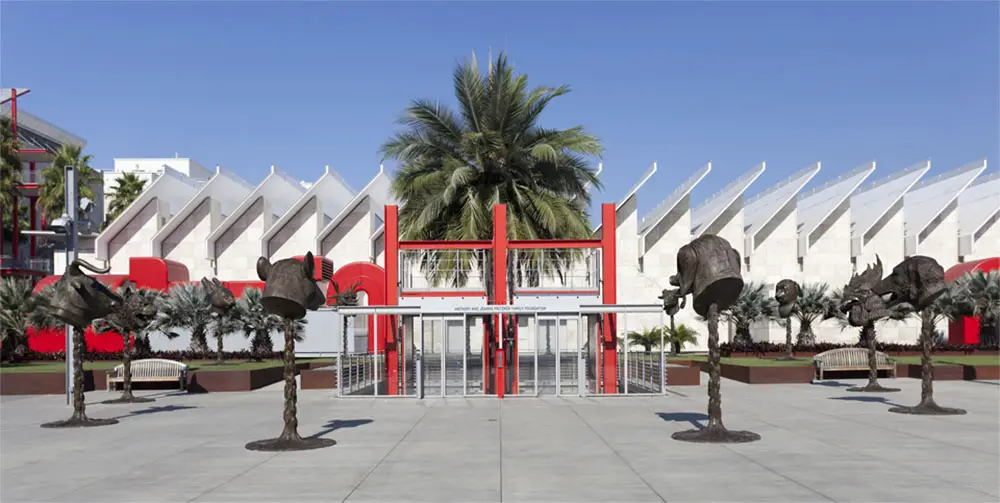
The Zodiac Heads were Weiwei’s very first public sculpture project. In 2010 the artist re-interpreted these objects on an oversized scale, focusing attention on questions of looting and repatriation and the fate of art objects that exist within dynamic and sometimes volatile cultural and political settings. They comprise a monumental commentary on China’s tumultuous interactions with the West contextualized by the recent auctioning and repatriation of a number of the original fountainheads.

The artist told the NY Times he’d long been interested in the animal heads and became keenly aware of their political overtones in 2009, when the Chinese government stoked a nationalist uproar over an attempt by Christie’s to auction off two pieces, a rabbit and a rat that had been part of the estate of the French fashion designer Yves Saint Laurent. China attempted to stop the auction with a spokeswoman for China’s Foreign Ministry claiming the two bronzes should be returned to China because they had been taken by “invaders.” The Rat and Rabbit bronze heads were eventually returned to China, donated by François Pinault in a ceremony on June 28, 2013. Those two bronze heads are now housed in the National Museum of China.
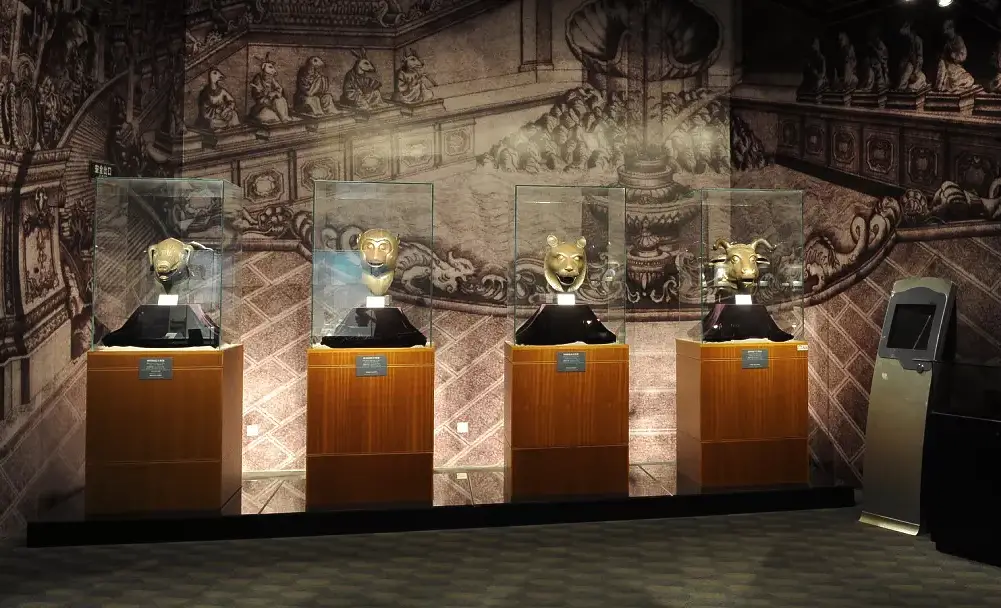
Of the other originals recovered or purchased at auction, the Horse now resides at The Capital Museum in Beijing, the Monkey, Tiger, Ox and Pig now reside in Beijing’s Poly Art Museum and the Dragon is believed to have been sold by auction house Tessier & Sarrou et Associés in 2018, but is unconfirmed.
Circle of Animals / Zodiac Heads was produced in six full-scale bronze editions and six gold-plated smaller editions for indoor display. The 12 bronze sculptures, the largest of which stands over 12′ tall, sold at auction to an undisclosed buyer for a record $5.5 million in 2015.
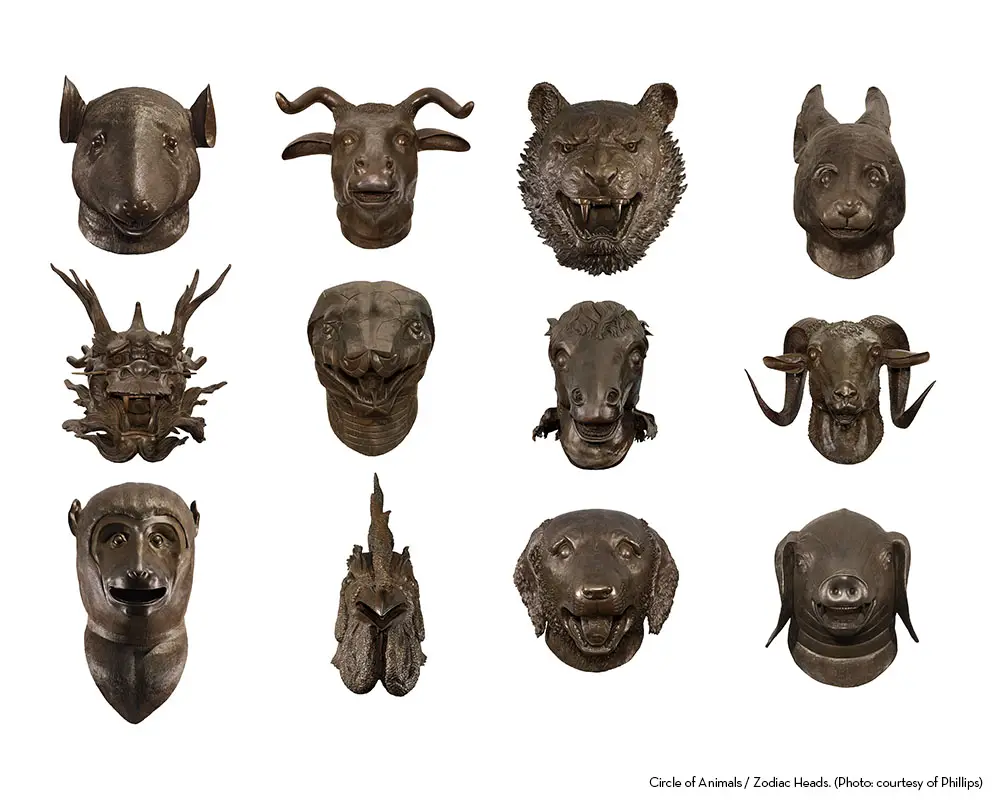
In Los Angeles, the installation returned to the Resnick Lawn at the L.A. County Museum of Contemporary Art (LACMA) in 2021 after its first brief appearance in the same spot ten years prior. Now, a permanent part of the museum’s collection, the heads remain a potent trigger for Chinese nationalist sentiments. For many Chinese, the original heads symbolize the “century of humiliation” that China endured at the hands of Western and Japanese invaders starting in the late Qing dynasty.
Although countless photos of the Circle of Animals installations have been published, it’s not easy to find large, detailed images of the heads, so I went and took close-up photos of the Zodiac Heads for you myself at the L.A. County Museum of Modern Art on Saturday, May 27th.

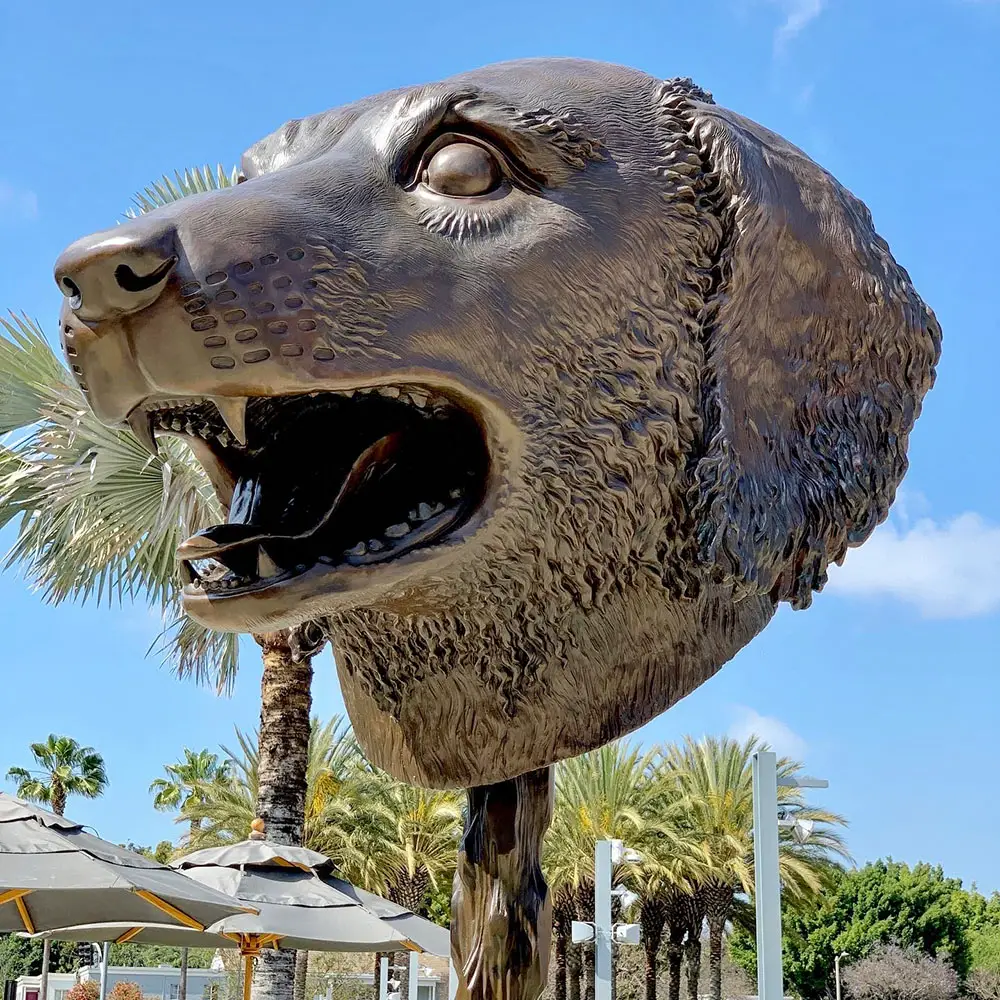
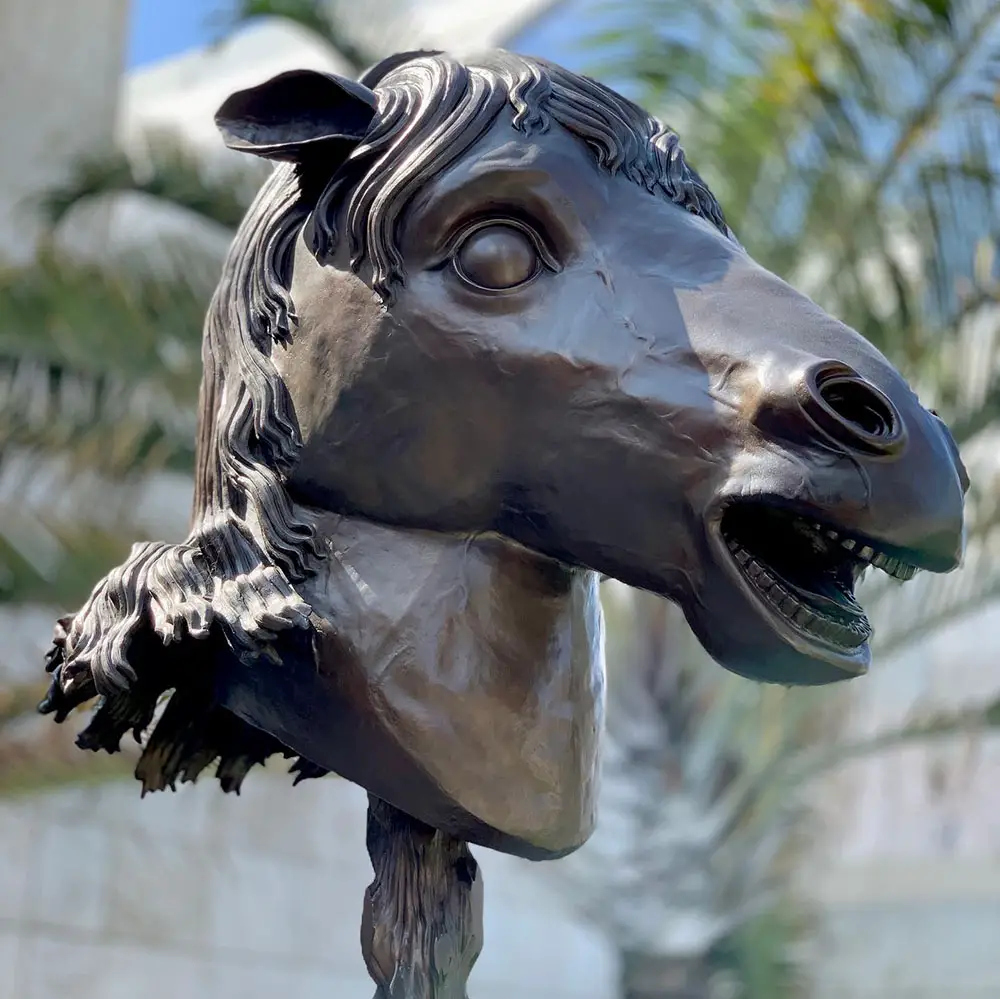
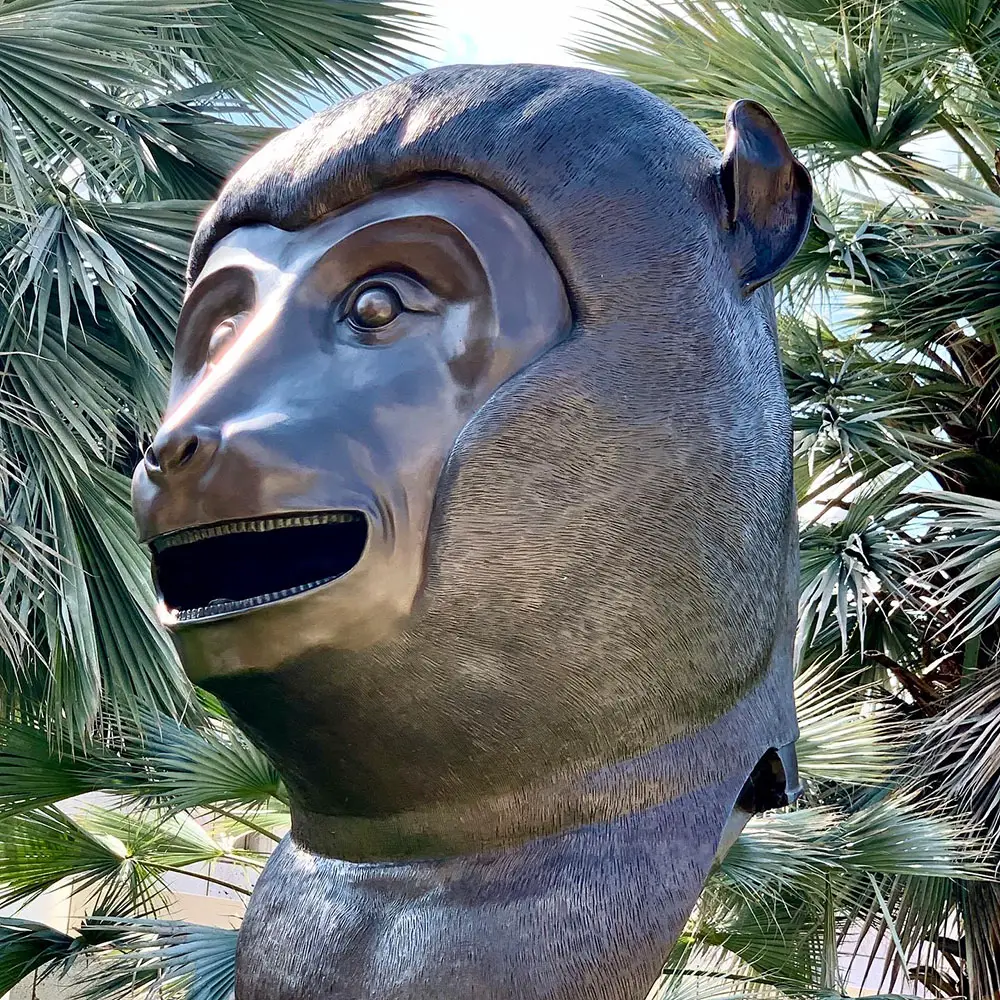
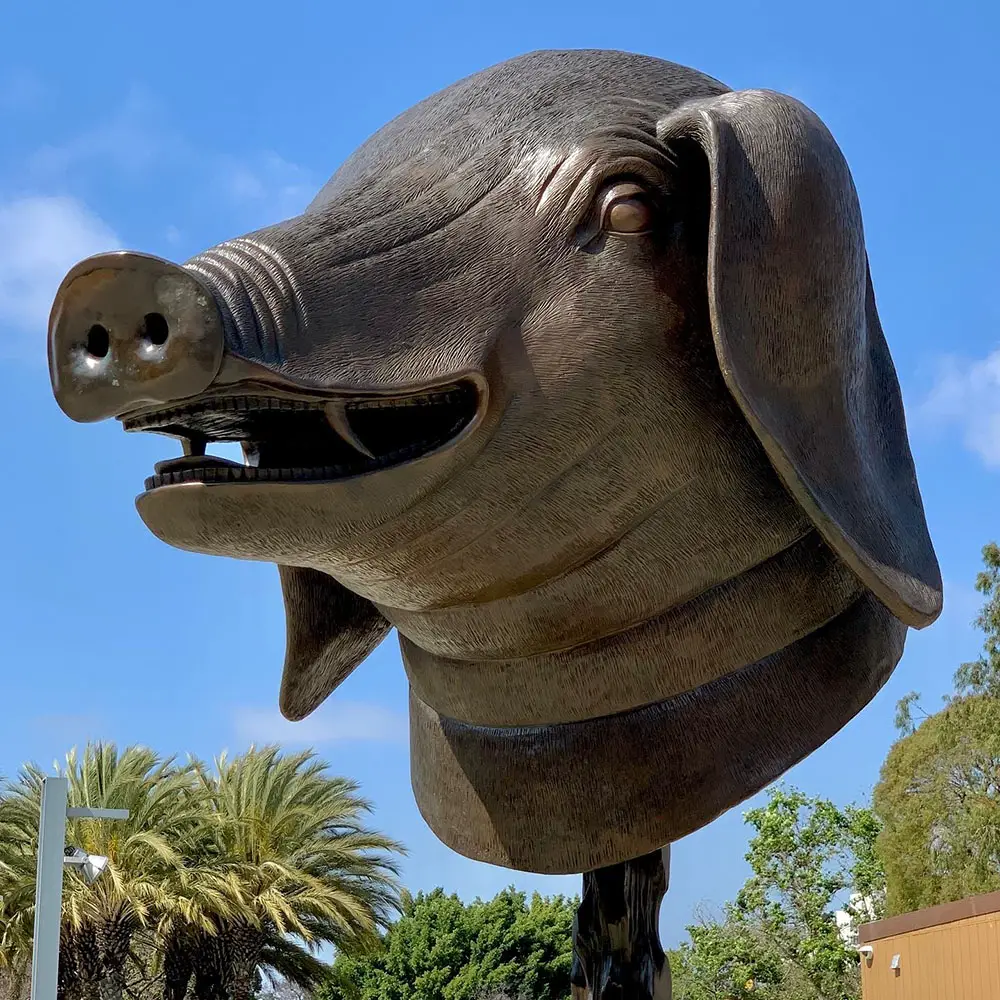

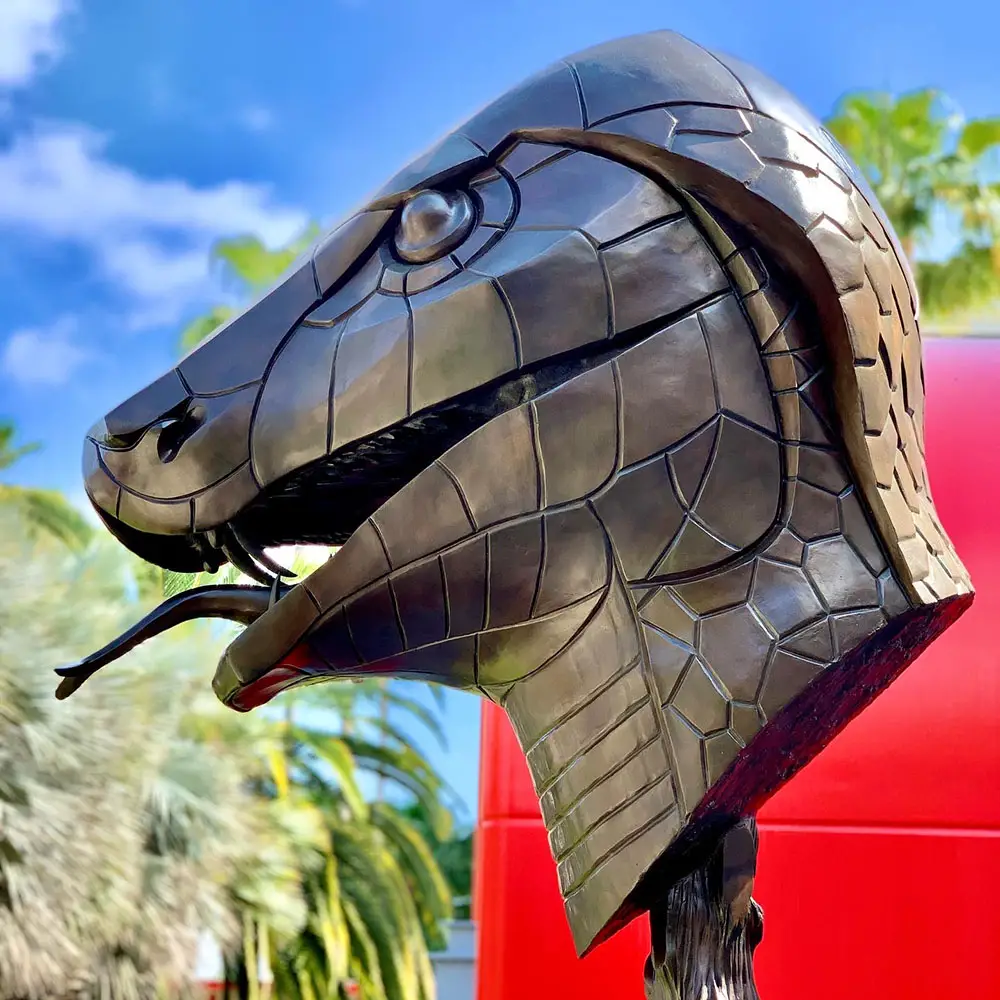
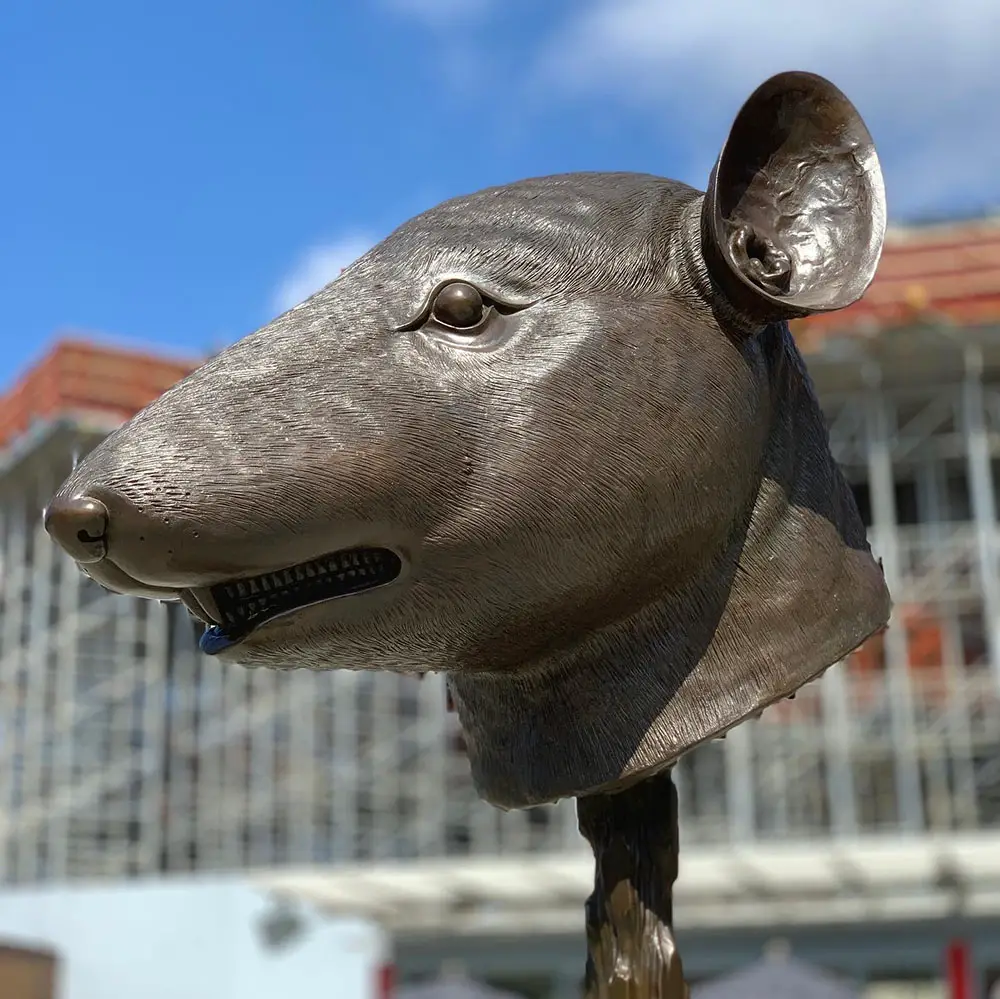
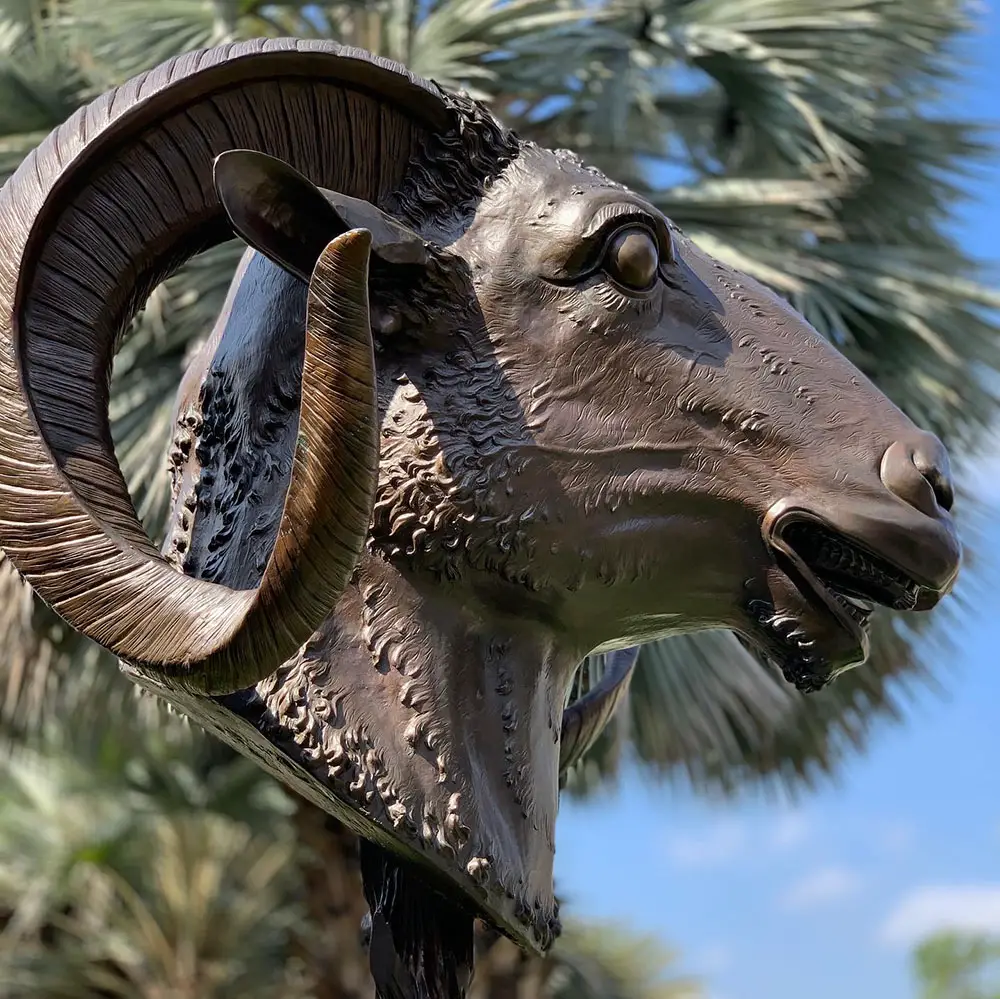

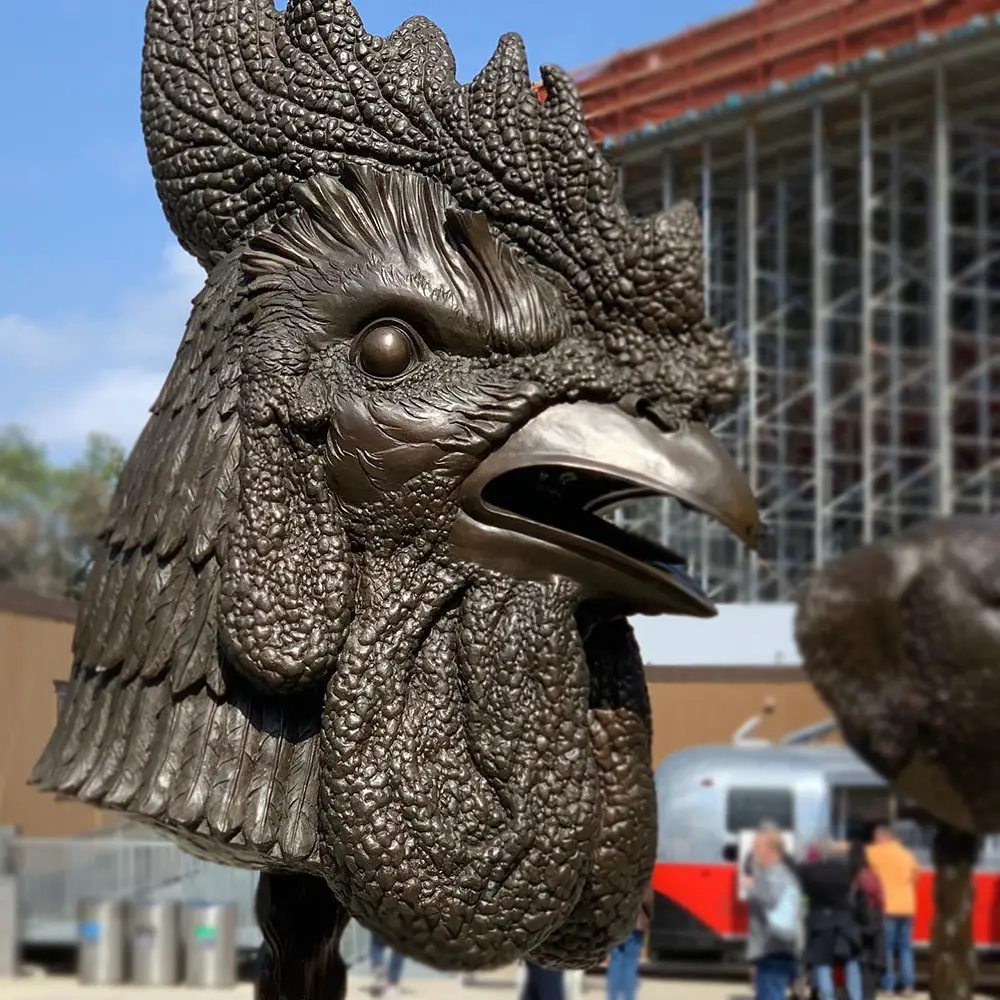

In addition to the large scale bronze sculptures, a series of smaller gold-plated versions, sold for $4.4 Million at auction in 2015 to the founder of Napster, and have been touring the globe since 2012.
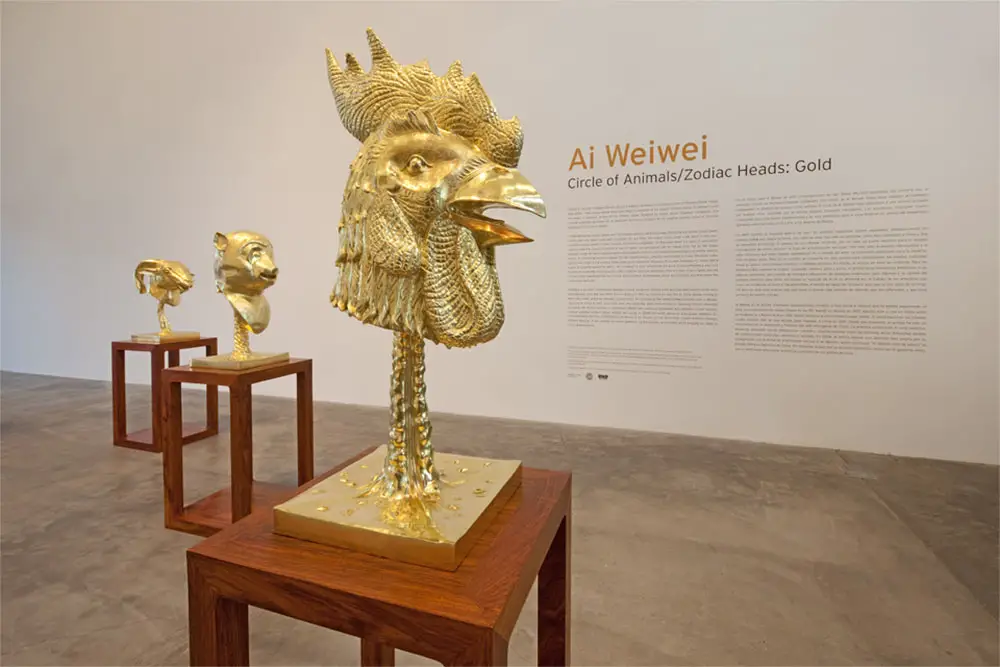
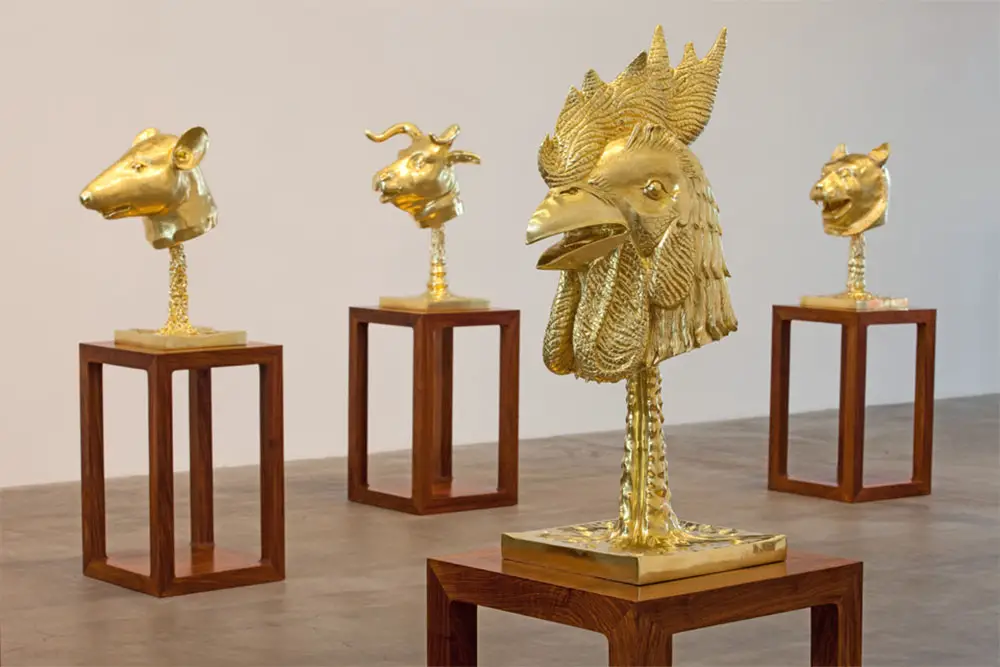
Sources:
LACMA
Zodiac Heads
Wikipedia
Vassar Archaeology
University of Manchester
Artnet
NY Times
